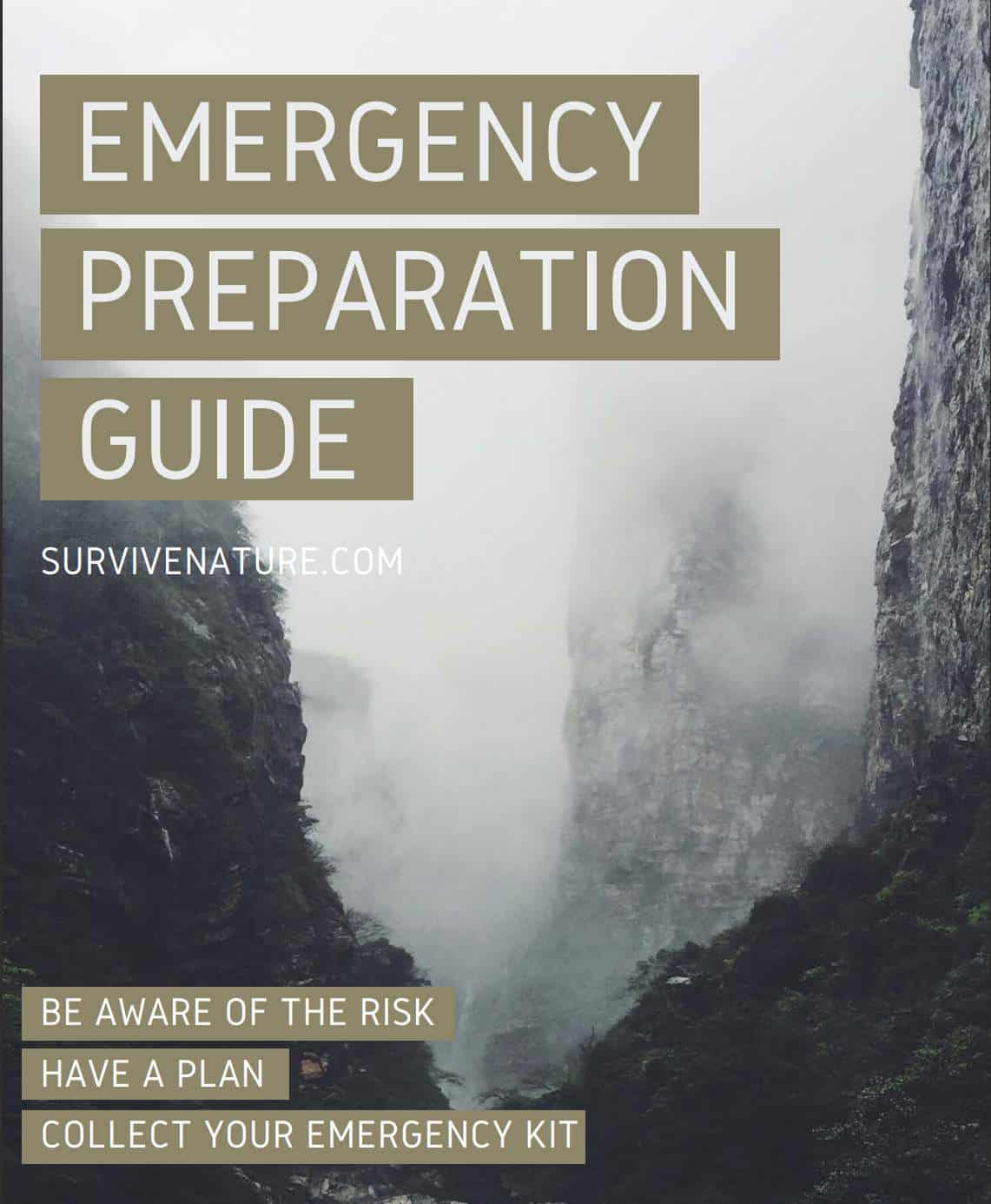Remember that scene in Ghost Protocol, set in 2023? Tom Cruise has just performed his breathtaking skyscraper stunt and then rushed into the chase for the bad guy? His character, Ethan Hunt, sees a massive sandstorm coming his way. And as we know, those dust storms are hazardous. But not to Ethan Hunt, who in a matter of seconds deploys his gas mask, survives the storm and, somewhat 90 minutes later, saves the world. Again.
But, let’s face it. That’s Ethan Hunt. A secret agent, a highly trained professional, and a movie hero. And what about you? Would you stand a chance in a ferocious dust storm in the midst of a desert? If you’re not sure, then keep reading this article to learn how to survive a sandstorm. And if you think that you may know the instructions that might save your life, compare your checklist with the information given below.
Introducing Sand Storms
Sandstorms are natural disasters that happen throughout the dry and dusty corners of the planet. You might have heard another name for them – haboobs, which comes from “Haab,” an Arabic word for “wind.” Haboobs occur as the result of downdrafts from thunderstorms in the upper layer of the atmosphere. In the most unfortunate turn of events, a sandstorm can evolve into a fierce dust hurricane with the wind rising to 60 miles an hour, resulting in a wall of sand particles thousands of feet tall.
The good news it only lasts for half an hour, usually. But these thirty minutes can be a real ordeal if you are not protected. Sand grains traveling at such high speeds can cause serious injuries to your skin, eyes, nose, and mouth. Surely, you will not be buried into a sand grave like some modern-day Lawrence of Arabia, but sandstorms are of great danger and should not be taken lightly. Knowing what to do during a dust storm if you happen to be in a desert area will help you stay unharmed.
Where Are You?
So you are caught in a sand storm? What are your actions? The solution to the problem depends on where you are at the moment. Are you traveling on foot? Are you driving in a car?
Here’s What to do if You are on Foot:
1. Immediately Search for Shelter.
You can take cover behind a large object hiding on a leeward side of it so the wind won’t get you. A big rock, a tree, or some other structure will do. Even a parked car can protect you. But beware, because sand grains will bounce off the ground all around you, so you still might want to protect open parts of your skin.
If you cannot find a shelter or take cover behind an obstacle, your best option is to crouch down, covering your head with your hands. It will minimize the risk of getting hit by relatively big flying objects.
2. Cover your Mouth and Nose.
You don’t want sand grains to get into your nostrils. The best option is deploying a respirator mask. But if you don’t have with you and got stranded by a dust storm, use a piece of cloth like a bandanna or a large handkerchief. If there is an opportunity, wet the cloth first.
3. Protect Your Eyes.
This is necessary to protect your eyes from harmful sand grains and see through the dust cloud. You can use regular eyeglasses as minimal protection. But to be honest, that is not quite enough. It is best to have airtight goggles or a full face mask that will protect your entire face.
But if you don’t have anything of the above, just cover your face with your hands before trying to find a piece of cloth to wrap around your head. This will protect your ears.
4. Protect Your Skin.
To keep as much of your body safe as possible, cover all of its exposed parts with any extra clothing you have.
5. Try to Find High Ground.
If you can’t find a shelter, you try to move to high ground. It is reasonable because sand grains don’t bounce off the ground too high when they travel. However, it is not recommended to move to high ground if you hear thunder.
Since dust storms can include lightning, the higher you get, the more you are at risk of being hit by lightning:
- Keep in mind that desert rains are rare, but they can be massive when they happen, becoming another problem as if high winds, grit, and other desert debris are not already enough. It is essential to stay away from dry riverbeds, ditches, and other places prone to flash flooding.
- Another thing you must keep in mind is that dunes are not safe places to hind behind them. High winds can easily lift enormous amounts of sand and bury you alive.
6. Shield Yourself.
Dust storms not only lift sand grains off the ground. Other debris and bigger objects will also come your way. Those objects may hit you, harm your body, your head, and even render you unconscious. So your best bet is to cover yourself any possible way. You can hide behind a large rock or another obstacle. If there are no such objects, you can get down and cover your head with arms or a travel bag.
IMPORTANT:
- With no shelter in sight, it is best to stay put and not move anywhere. During a sandstorm, you will hardly see where you are going. Harsh weather conditions will get you exhausted. And don’t forget about debris and other flying objects that can get you seriously injured.
7. Wait.
Now that you have taken all the actions and the sandstorm is fully on, all you are left to do is wait until it’s over. Be patient and don’t rush out until you are sure there is no danger.
If a Sandstorm Gets you While Driving, you Will Have to:
1. Pull off the Road.
The first thing you might want to do if you’re caught in a sandstorm on the road is to pull your car off. If visibility drops rapidly, use the highway marks. While moving, sound your horn periodically, and don’t forget to turn the hazard lights on and keep your headlights on.
When you reach a safe spot, set the emergency brake, and turn off your lights.
- If you leave your brake lights on while parked off the road, other drivers might use them as a guide and move towards you. This may result in a vehicle accident.
- If there is no way to pull off the road and you have to stay on it, do quite the opposite and keep your light on.
2. Stay Inside Your Motor and Wait out the Storm.
Roll up all the windows and block vents that suck air from the outside. You don’t want any dust inside your car. And don’t move anywhere until the storm is over.
3. Race Against Storm
Trying to outrun a storm may well be an option, but you will have to do it extremely safely, contemplating all risks and dangers. Do not try it if you will have to drive at high speeds. You don’t want this chase to end up in a crash. Some storms can travel at speeds up to 75 miles an hour, so consider your chances reasonably. If you see that a storm catches up with you, the best option is to stop driving, pull off the road, and take all the precautions mentioned above.
It is important to note:
- Do not ever try to outrun a storm on foot. Sandstorms tend to change directions and gain speed suddenly, and it’s almost impossible to predict.
- The best option is to find a safe place. Park your motorcar there, roll up the windows, and wait for a dust storm to pass.
Be Ready!
To not be taken by surprise, if you travel or live in a sandstorm-prone area, you should always think beforehand and be ready for an emergency. Here are some tips on that subject.
1. Get Familiar With the Region
Learn about the place you plan to travel to. Are sand or dust storm often there? For instance, if you travel to Sahara or Gobi deserts, you should know for sure that coming across a sandstorm is a no-brainer. But such storms happen in any dry or semi-dry sandy region with high winds on the planet. Traveling through such regions require you to be prepared for sandstorms.
2. Stay Alert
You should always check weather reports and stay alert for storm warnings. Dust or sand storms usually happen during hot summer periods. It takes certain atmospheric conditions for a dust storm to begin so that the weather surveillance services can predict its possibility.
Watch local television and listen to local radio stations for weather reports and storm warnings. Quite often, storm-prone regions have special road signs that will warn you of sandstorms.
And still, the best encounter with a sandstorm is the one that never happened in the first place. If there is a good chance of getting into a sand or dust storm, don’t risk it, stay indoors, and reschedule your trip.
3. Get Yourself Prepared.
Here is some emergency equipment you should have for sandstorm situations:
- Airtight goggles or full-face masks to keep your eyes, nose, and mouth protected. A bandanna with a wide-pole hat for minimal protection. Remember to cover your ears, so always carry an extra piece of cloth to wrap around your head.
- A tin of petroleum jelly. This is for your nostrils. Smear some of the lubricants on the inside of your nose. Thanks to petroleum jelly, your nostrils will get protected from drying.
- Get proper clothing. Your body must be fully covered and protected. Make sure you have long socks, a long-sleeved shirt, a jacket, trekking boots. Consider getting a pair of gloves, too.
- A rope will come in handy if you travel with a group. There are stories of people who fell behind their partners, got seriously injured, and incapacitated during storms. The more attention each member of the group gets, the better. So a rope is a perfect choice for this. It will keep the group together.
- Always have water drinking water.
- A blanket will also be helpful. Despite the common misconception, deserts can get really cold.
We recommend having the listed things with you at all times you decide to travel through storm-prone areas. Store these emergency items in the trunk of your vehicle and follow all of the instructions above.
Conclusion
As magnificent and mesmerizing as they may look, each sandstorm is a serious threat to your health and even your life. So if you happen to see a large cloud of sand in the distance coming your way, don’t waste time taking a photo for your Instagram page. Get your stuff together and seek shelter. Because if you are not prepared enough, you don’t want to stay in the way of the force of nature.
We hope that the information we’ve given will be useful should you find yourself amidst the desert one on one with a dust storm. Still, we encourage you to do more search on the topic. There are many articles, photos, and videos on Google.


